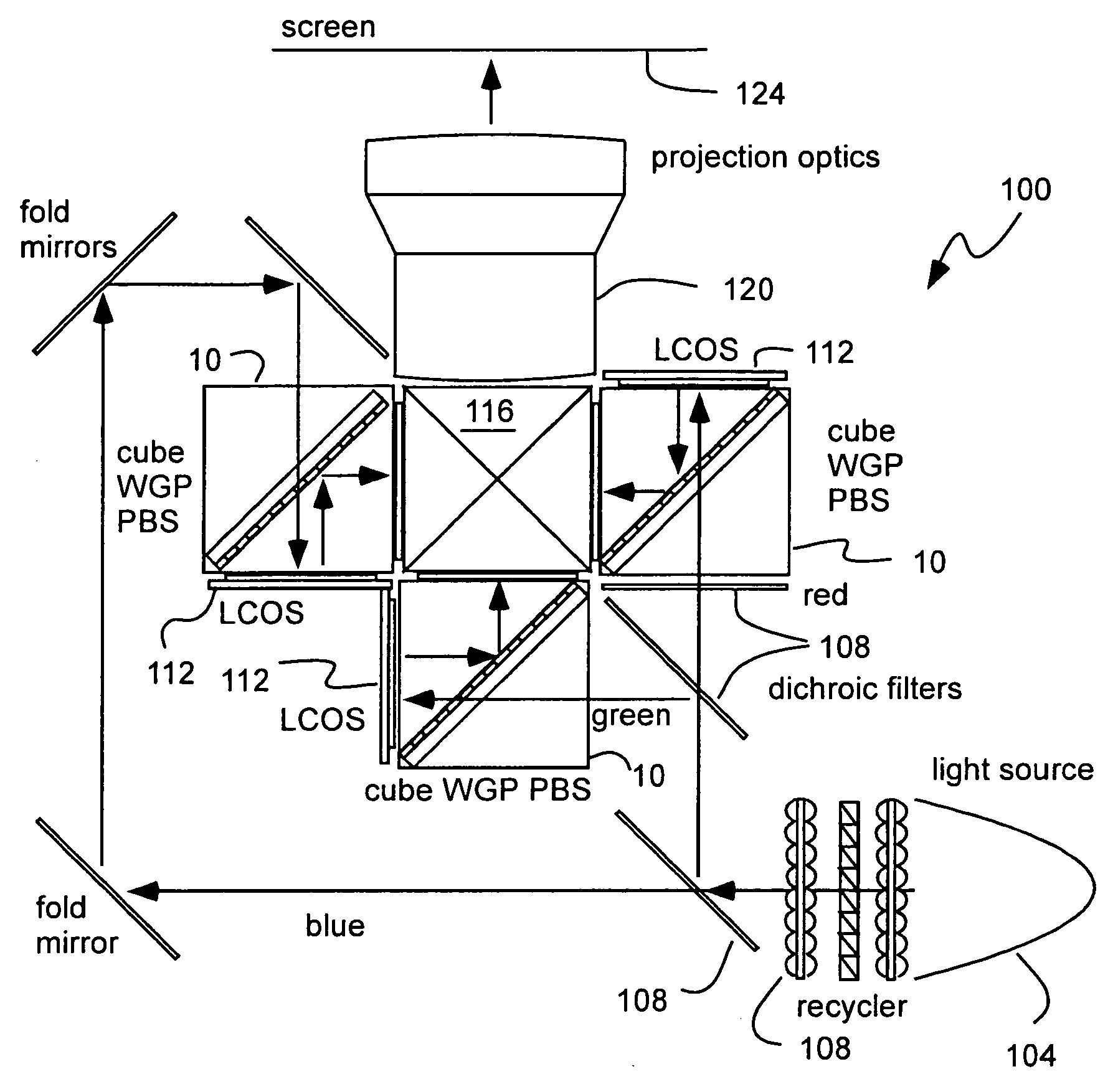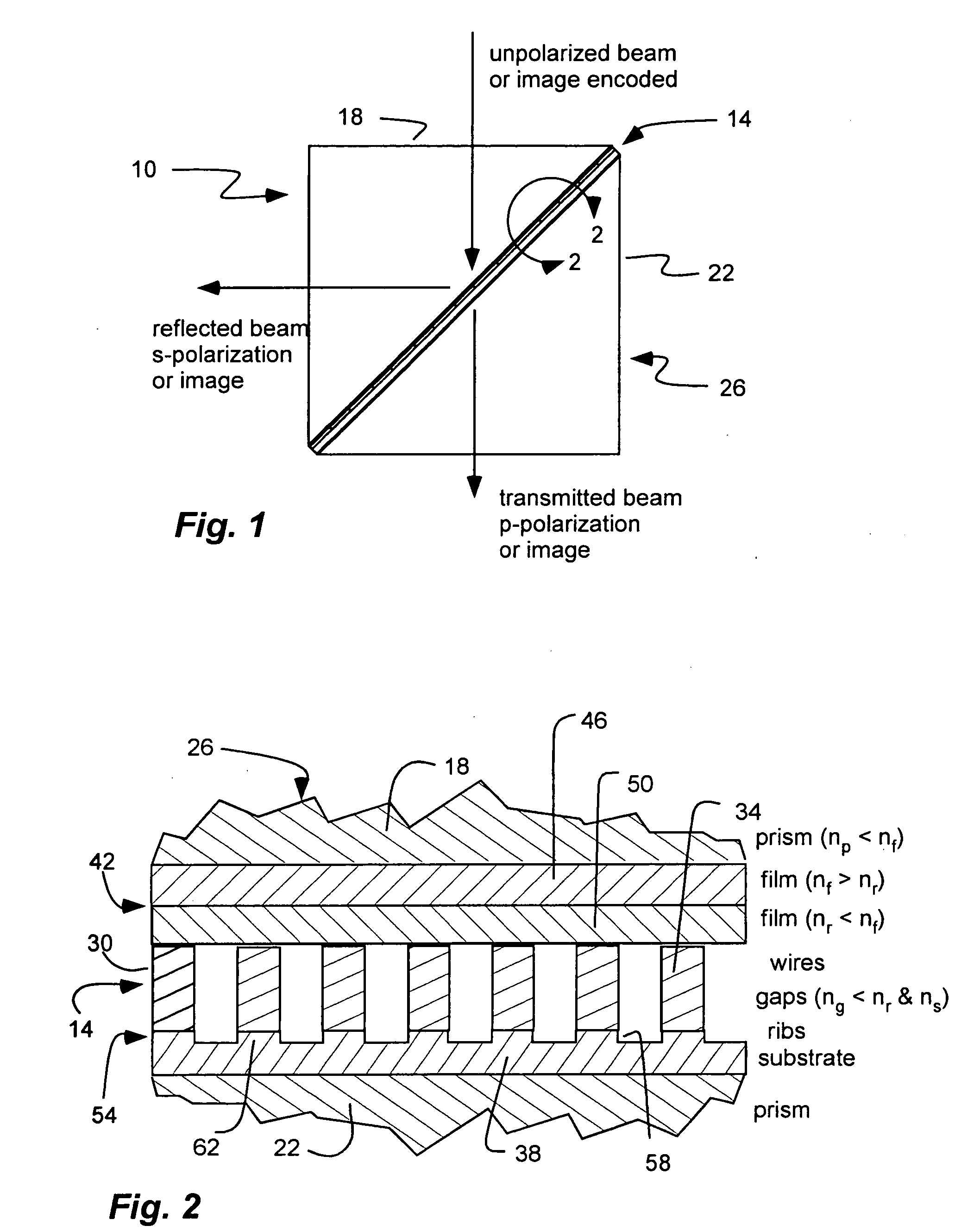Projection display with a cube wire-grid polarizing beam splitter
- Summary
- Abstract
- Description
- Claims
- Application Information
AI Technical Summary
Benefits of technology
Problems solved by technology
Method used
Image
Examples
example 1
[0045]Referring to FIG. 3, a first non-limiting example of a cube wire-grid polarizer is shown. The prisms are BK7 glass (refractive index n=1.51-1.53). The substrate also is BK7 glass. The plate wire-grid polarizer includes aluminum (AL) wires and air gaps (refractive index of 1). The pitch or period of the wires is 120 nm. The rear film layer adjacent to or closer to the wires is silicon dioxide with a refractive index of n=1.45. The forward film layer adjacent to or closer to the prism is titanium dioxide with a refractive index of n=2.3.
[0046]The plate wire-grid polarizer was made by a lithography process to form the wires on the substrate. The substrate was etched between the wires to form troughs between the wires, and ribs between the troughs upon which the wires were disposed. The rear film layer was deposited over the wires, and the front film layer was deposited over the rear film layer.
[0047]By way of comparison, FIG. 4 shows a similar plate wire-grid polarizer without th...
example 2
[0051]Referring to FIG. 6, a second non-limiting example of a cube wire-grid polarizer is shown. The prisms are BK7 glass (refractive index n=1.51-1.53). The substrate also is BK7 glass. The plate wire-grid polarizer includes aluminum (AL) wires. The pitch of the wires is 120 nm. The rear film layer adjacent to or closer to the wires is spin-on glass with a refractive index of n=1.17. In addition, the material of the rear film layer fills the gaps between the wires. The front film layer adjacent to or closer to the prism is titanium dioxide with a refractive index of n=2.25.
[0052]The plate wire-grid polarizer was made by a lithography process to form the wires on the substrate. The substrate was etched between the wires to form troughs between the wires, and ribs between the troughs upon which the wires were disposed. The rear film layer was deposited over the wires, and the front film layer was deposited over the rear film layer.
[0053]The calculated performance of the cube wire-gri...
PUM
 Login to View More
Login to View More Abstract
Description
Claims
Application Information
 Login to View More
Login to View More - R&D
- Intellectual Property
- Life Sciences
- Materials
- Tech Scout
- Unparalleled Data Quality
- Higher Quality Content
- 60% Fewer Hallucinations
Browse by: Latest US Patents, China's latest patents, Technical Efficacy Thesaurus, Application Domain, Technology Topic, Popular Technical Reports.
© 2025 PatSnap. All rights reserved.Legal|Privacy policy|Modern Slavery Act Transparency Statement|Sitemap|About US| Contact US: help@patsnap.com



